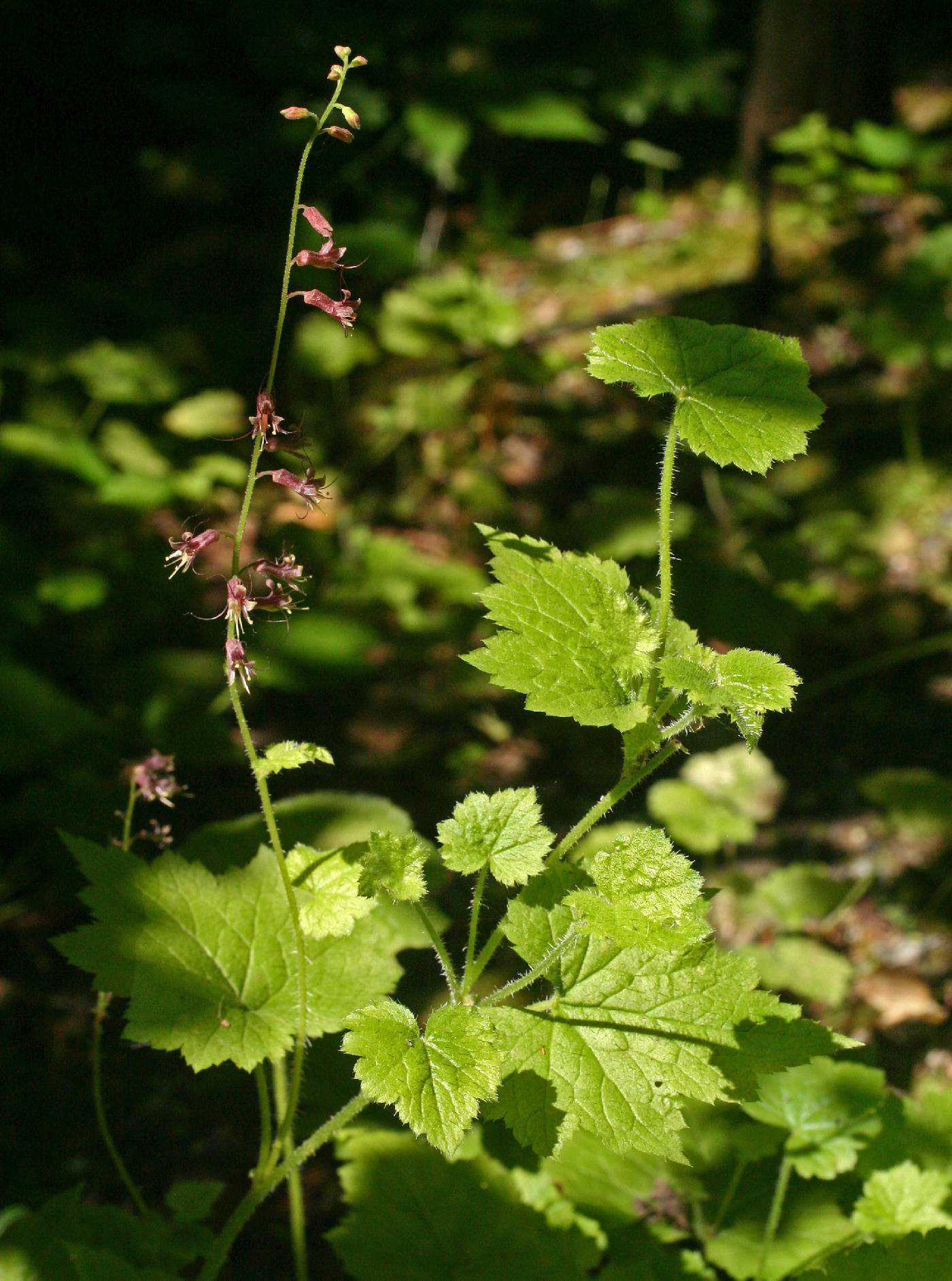
|
Family: Saxifragaceae |
Herbs, rhizomatous, not stoloniferous; rhizomes sometimes branched, scaly; caudex not cormlike, with persistent leaf bases. Flowering stems erect, leafy, 2.5-70 cm, sparsely to moderately, short to long stipitate-glandular. Leaves in basal rosette and cauline; cauline leaves reduced distally, vegetative shoots sometimes from axillary buds of cauline leaves; stipules present; petiole stipitate-glandular, (adventitious buds usually produced at apices of petioles of rosette and cauline leaves, sometimes forming plantlets); blade ovate, shallowly 5-9-lobed, base cordate, ultimate margins strongly to obscurely, irregularly serrate to nearly dentate, each tooth ending in glandular hair, apex acute (rarely obtuse), surfaces subglabrous to stipitate-glandular; venation palmate. Inflorescences racemes, from axillary buds in rosette, 10-150-flowered, bracteate. ( Pedicels with subtending bracts.) Flowers bilaterally symmetric; hypanthium adnate to ovary only at base for less than 1 mm (ovary appearing superior), free from ovary for 4-5 mm, greenish, ± split to base, (cylindric-funnelform); sepals (persistent), 5, green with variable development of red-purple stripes, (unequal, slightly gibbous at base, stipitate-glandular, 3 dorsal sepals ovate- to elliptic-triangular, apex obtuse to rounded-mucronate, 2 ventral-lateral sepals narrowly ovate-triangular to oblong-triangular, apex acute to acuminate); petals 4, (recurved), greenish to brown-purple, (± linear); nectariferous tissue proximal to stamens; stamens 3, (inserted at apex of hypanthium opposite dorsal sepals, slightly exserted); filaments filiform; ovary superior, 1-locular, (oblong, turbinate, apex 2-cleft, stipitate-glandular), carpels connate proximally; placentation parietal; styles 2; stigmas 2. Capsules 2-beaked, (ovoid, turbinate). Seeds brown to nearly black, subglobose, distinctly muricate. x = 7. Although morphologically similar, as reviewed by D. E. Soltis et al. (2007), diploid and tetraploid Tolmiea each meets the criteria for all of the commonly used species concepts: they are reproductively isolated, so they are biological species; they are distinct evolutionary lineages, so the two cytotypes meet the expectations of the evolutionary species concept; each is monophyletic, so both can be considered phylogenetic (apomorphic) species; they are diagnosable on the basis of chromosome number and molecular characters, thus fitting the phylogenetic/diagnosability species concept; and morphological characters distinguish the two cytotypes (although these may be considered cryptic by some), hence they are taxonomic species.
|
This project was made possible in part by the Institute of Museum and Library Services [MG-70-19-0057-19].
Powered by Symbiota



